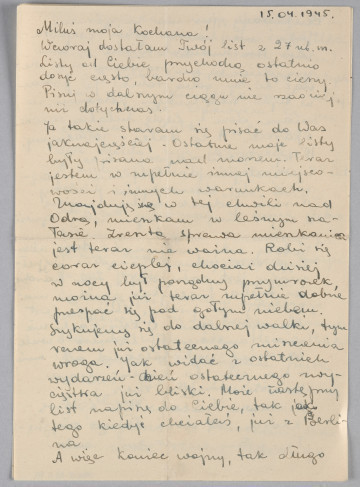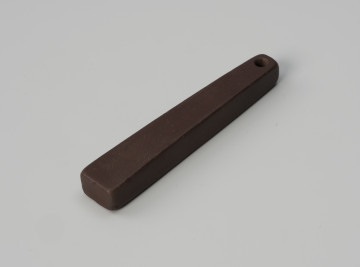
A letter
1945
Museum of the history of Polish Jews
Part of the collection: Middle Ages
In the early Middle Ages, whetstones were used for sharpening cutting and piercing objects with sharp points, as well as for cleaning and smoothing surfaces made of metal, horn, bone, wood, and stone. The vast majority of the whetstones discovered in Pomerania were made from local raw materials, usually sedimentary rocks – sandstones, quartzite, silty and dusty shales, as well as metamorphic rock shales, including schist and phyllite, as they were the easiest to handle and process. Apart from items made from local materials, phyllite whetstones imported from Norway garnered great interest among their contemporary users. Modern research methodologies make it possible to precisely identify the origin and type of the raw material used to craft a given artefact. The analyses of surfaces of whetstones also provide interesting information, as they enable us to identify the tool sharpening techniques. Large items such as axes, hatchets and weapons were sharpened by running the whetstone across their surfaces. This movement resulted in the formation of characteristic marks running along the stone. A different technique was used to sharpen smaller objects – they were sharpened by running the object against the whetstone, which was held in place, which resulted in the formation of a groove. The whetstone from Kamień Pomorski was used for sharpening small tools. The groove, which is clearly visible on its working surface is typical of the second technique described above. This whetstone has an oval shape and rounded edges. On one end there is a small hole for threading a string or a leather strip. The whetstones were attached to a belt or worn around the neck. Tools without holes were stored in leather or textile pouches attached to the belt.
Grzegorz Durdyń
Author / creator
Dimensions
cały obiekt: height: 7 cm, width: 1.5 cm
Object type
whetstone, tool
Technique
smoothing, drilling, carving, sculpture carving
Material
rock
Origin / acquisition method
field research
Creation time / dating
Creation / finding place
Owner
Muzeum Narodowe w Szczecinie
Identification number
Location / status

1945
Museum of the history of Polish Jews

476 — 1250
National Museum in Szczecin

800 — 1200
National Museum in Szczecin
DISCOVER this TOPIC
Museum of King Jan III's Palace at Wilanów
DISCOVER this PATH
Educational path